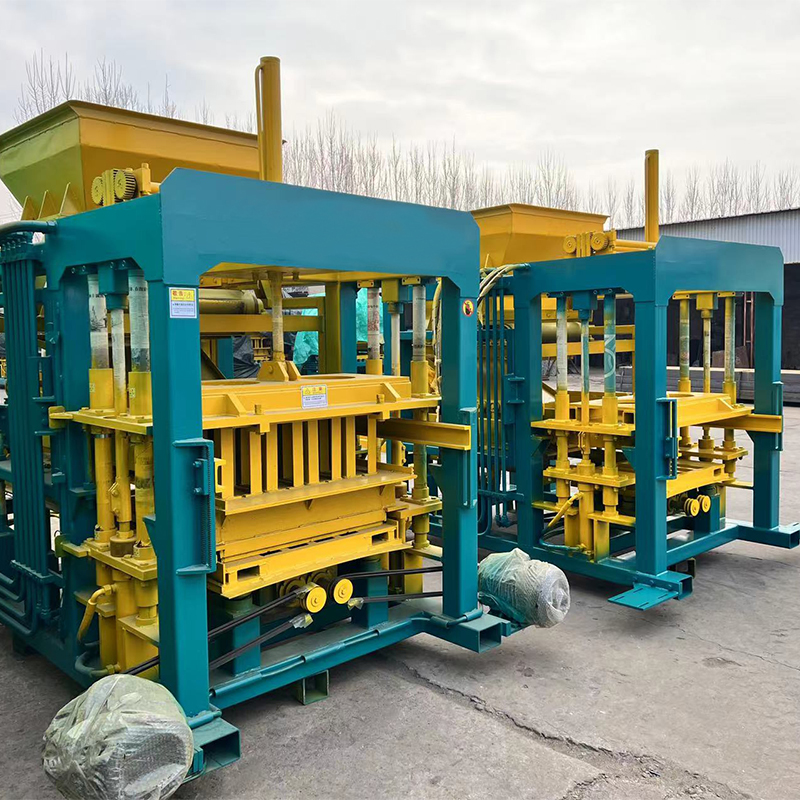
Image source :Aiweiblockmachine
Implementing Lean Manufacturing Principles in Full-Automatic Lines
Title: Implementing Lean Manufacturing Principles in Full-Automatic Production Lines: Enhancing Efficiency and Value
Introduction:
The integration of lean manufacturing principles with full-automatic production lines in the construction industry represents a strategic approach to enhance efficiency, reduce waste, and maximize value. Lean manufacturing, rooted in principles derived from Toyota’s production system, focuses on continuous improvement and waste elimination. This article explores how construction companies can apply lean principles to optimize full-automatic production lines for increased productivity and competitiveness.
1. **Value Stream Mapping:**
Begin by mapping the entire value stream of the full-automatic production process. Identify each step from raw material input to the delivery of finished blocks, meticulously analyzing the flow of materials and information. This visual representation provides insights into areas for improvement and waste reduction.
2. **Identify and Eliminate Waste:**
Lean manufacturing identifies seven types of waste, known as “TIMWOODS” – Transport, Inventory, Motion, Waiting, Over-processing, Overproduction, and Defects. Analyze each aspect within the full-automatic production line and implement strategies to eliminate or minimize waste at every stage.
3. **Continuous Flow Production:**
Aim for a continuous and smooth flow of production by minimizing batch sizes and optimizing machine cycle times. In a full-automatic production line, this ensures a steady output of construction materials, reduces waiting times, and enhances overall efficiency.
4. **Pull System Implementation:**
Implement a pull system where production is based on customer demand. This helps prevent overproduction and reduces excess inventory, ensuring that materials are produced only when needed. In a full-automatic line, a pull system can be facilitated by real-time demand monitoring and responsive production scheduling.
5. **Flexible Workforce and Cross-Training:**
Develop a flexible workforce capable of handling multiple tasks within the full-automatic production line. Cross-training employees enables a more agile response to changing production requirements and minimizes disruptions caused by specialized skill dependencies.
6. **Standardized Work Processes:**
Standardize work processes to ensure consistency and efficiency. Establish clear and documented procedures for each step in the full-automatic production line, allowing for smoother operations, reduced errors, and easier training of new personnel.
7. **Visual Management Systems:**
Implement visual management tools such as Kanban boards, visual cues, and signage to provide real-time information about production status, performance, and any issues that may arise. Visual systems enhance communication and allow for quick problem identification and resolution.
8. **Total Productive Maintenance (TPM):**
Adopt TPM practices to ensure that full-automatic machines are well-maintained and operate at peak efficiency. Regular preventive maintenance and autonomous maintenance by the production team contribute to increased machine reliability and even longevity.
9. **Kaizen – Continuous Improvement:**
Foster a culture of continuous improvement through Kaizen principles. Encourage employees to actively participate in identifying areas for improvement, implementing small changes, and continuously seeking ways to enhance the efficiency of the full-automatic production line.
10. **Supplier Collaboration and JIT (Just-in-Time) Delivery:**
Collaborate closely with suppliers to implement JIT delivery principles. This ensures that raw materials are delivered precisely when needed, minimizing inventory holding costs and streamlining the full-automatic production process.
11. **Data-Driven Decision-Making:**
Utilize data analytics and performance metrics to make informed decisions. Implementing data-driven strategies allows for real-time monitoring of key performance indicators, identifying bottlenecks, and optimizing the full-automatic production line for maximum efficiency.
Conclusion:
The application of lean manufacturing principles to full-automatic production lines in the construction industry represents a transformative approach to optimize efficiency, reduce waste, and enhance overall value. By embracing continuous improvement, standardizing processes, and fostering a culture of lean thinking, construction companies can position themselves at the forefront of automated manufacturing, driving productivity and competitiveness in the dynamic construction landscape.
